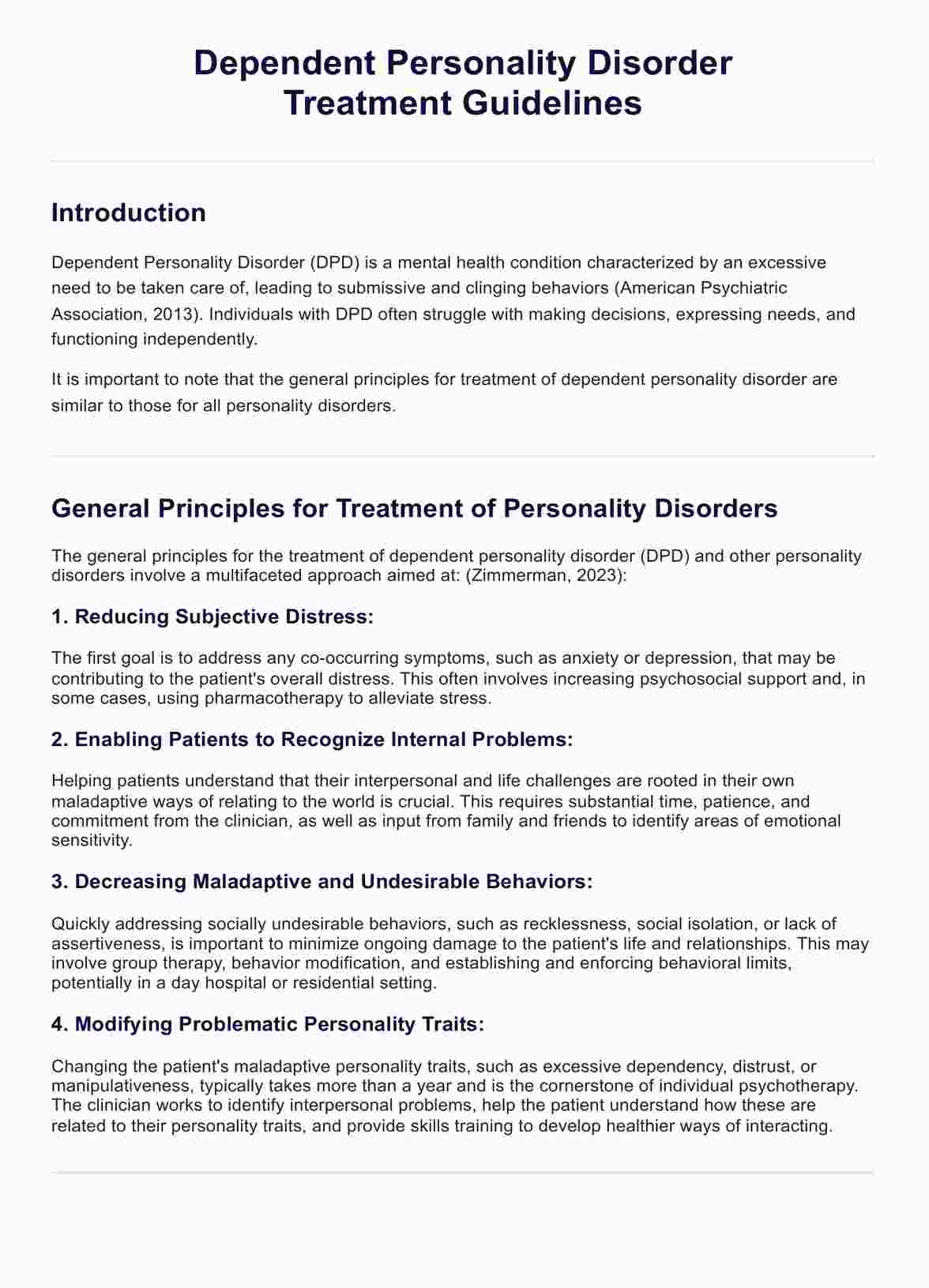
Dependent Personality Disorder Treatment Guidelines
Improve treatment planning for dependent personality disorder with our free resource to improve client outcomes.
Use Template
Dependent Personality Disorder Treatment Guidelines Template
EHR and practice management software
Get started for free
*No credit card required
Free
$0/usd
Unlimited clients
Telehealth
1GB of storage
Client portal text
Automated billing and online payments











